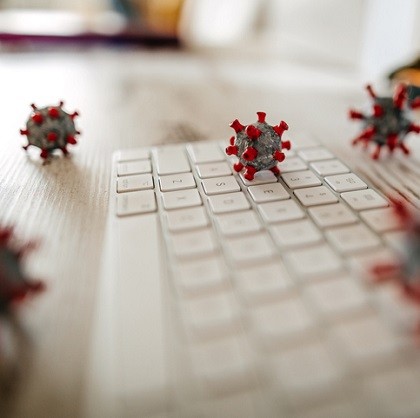
Beyond COVID19: Minimizing the Transmission of Germs for Healthier Facilities
Next to frequent handwashing, cleaning of public spaces is the next line of defense when it comes to protecting human health by minimizing the transmission of germs and in some cases, even more dangerous infectious diseases. In addition to the most recent coronavirus pandemic, an investment in effective commercial cleaning solutions can also help facilities significantly reduce the health and financial impacts of even more common environmental pathogens, such as influenza, cold, strep, and a host of other viruses and germs that will remain with is even after the global threat of COVID-19 passes.
Most Common Germs that are Spread
There are four major types of germs that can make people sick that facility managers, building service contractors and cleaning staff should consider when considering their cleaning protocols:
- Bacteria: Some infections that bacteria can cause include ear infections, sore throats (tonsillitis or strep throat) and pneumonia.
- Viruses: Viruses cause chickenpox, measles, flu, and many other diseases.
- Fungi: Thrush, ringworm and fungal nail infections are the most common diseases caused by fungi.
- Protozoa: Some protozoa cause intestinal infections that lead to diarrhea, nausea, and belly pain.
How the Transmission of Germs Works
Viruses, bacteria and fungi are most often spread by our hands through person-to-person contact, entering through the mouth, nose, eyes and breaks in the skin. As we’ve learned well with COVID-19, when someone who is infected coughs, sneezes or exhales they release droplets of infected fluid. When these droplets fall on nearby surfaces and objects, and someone touches the contaminated surface, germs can be transferred from the surface to hands and vice-versa, especially when high-touch surfaces are contaminated – light switches, handrails, doorknobs, bathroom faucets, etc.
And while each pathogen’s surface lifespan varies, some germs can live on dry surfaces for several hours and moist surfaces for up to three days. Salmonella, for example, can survive freezing and can survive on dry surfaces for at least 24 hours.
Not only does frequent cleaning in and of itself help to significantly decrease the number of environmental pathogens on surfaces, but the type of professional cleaning tools and equipment you use is just as important, if not more, in reducing the risk of transmission and infection.
The Cost of Germ Transmission
Even after the threat of COVID-19 passes, ordinary illnesses such as colds, flu and stomach bugs will still be a part of everyday lives. And while these illnesses are personally uncomfortable and socially isolating, they are also the most common cause of short-term employee absences and bear a financial impact associated with lost school and workdays.
According to The American Cleaning Institute (ACI), an estimated 50 million work days and 60 million school days are lost annually because of the common cold. And on top of that lost productivity and/or output, Americans spend about $5 billion each year on their colds – about $3 billion on doctors’ visits and $2 billion on treatments.
For industries and markets that were heavily impacted by COVID-19, such as restaurants and food service, education and public transit <links>, as they double down on their cleaning protocols, they’re re-assessing their investments in cleaning tools and equipment in order to safeguard health and limit financial losses. The organizations that weigh the potential financial loss against a modest investment in effective commercial cleaning solutions will be able to easily identify the long-term return on investment that complements the more tangible short-term cleaning results.
Removing Germs from Your Facilities
Now-in-days, unless you’re in the commercial cleaning industry, the terms cleaning and disinfecting are often times used interchangeably, which is incorrect given that the two processes serve completely different purposes.
Cleaning, by definition, removes dirt, germs and impurities, as opposed to eliminating or killing them. The cleaning process is important as it lowers the number of germs on a surface, removing any roadblocks that could potentially hinder the effectiveness of your preferred disinfectant solution. The subsequent disinfecting process works by using chemicals to kill any remaining germs, but it doesn’t necessarily clean surfaces or remove germs, making it a necessity to use the right tools for cleaning high touch areas in your facility prior to disinfection.
Next Steps in Ramping Up Your Cleaning Effectiveness
Commercial cleaning investments help preserve assets, improve indoor facility quality, enhance safety, and when the right tools are used, reduce the transmission of germs, from COVID-19 to the common cold. And with an investment in effective commercial cleaning solutions, you’ll see a measurable return on investment when taking a comprehensive look at the areas most impacted by the transmission of germs, including improved occupant health, enhanced environmental quality, reduced financial losses, and increased productivity.
